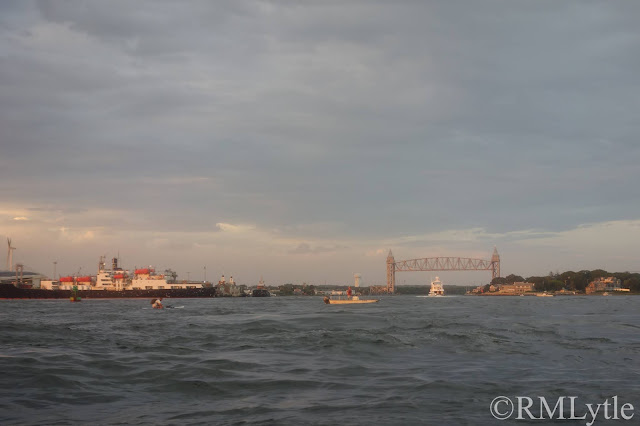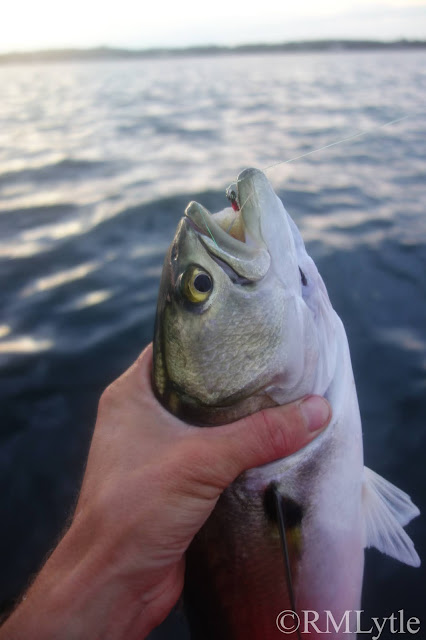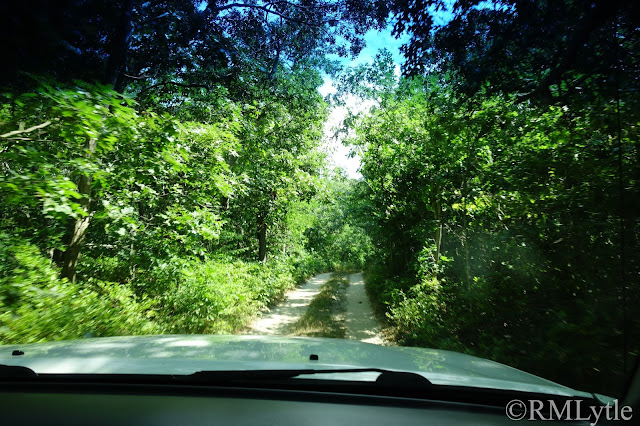Historically, coastal streams in the Northeast were rich with brook trout. These lower gradient, mud and gravel bottomed, vegetation filled spring fed streams provided a nutrient rich habitat that grew char faster than high gradient mountain streams ever could. Add to that access to saltwater, and anadromy can happen. When a salmonid has access to the ocean and the plethora of calorically dense bait fish it holds, they grow to exceptional proportions. The anadromous life style also makes brook trout take on a chrome coloration not often seen in their solely freshwater fluvial brethren.
Connecticut doesn't have any healthy sea run, or "salter" brook trout populations anymore. Neither does Rhode Island. Massachusetts though still has a few. On and early fall trip, Noah and I decided to pay a visit to one we'd never seen before. The wind was honkin' and we felt we had very little we could accomplish on the salt in kayaks, despite crazy daily bass and bluefish blitzes and the first little tunny of the year being around, but Cape Cod has some surprising freshwater gems and this was one of them.
I got taken almost immediately by a sizable brook trout, on my third cast, but it ended up being Noah who struck first, with a tiny silvery brook trout that flopped back into the water before it was brought to hand. But he redeamed himself not long later with an absolute gem of a long, lean female wild brook trout.
We Continued down stream toward the estuary, getting a few takes as we went, but never got to brackish water because the stream was just too difficult to navigate. On our way back up I made a cast into the pool where I'd had the first takes and my streamer got pounded. A studly brook trout began leaping as though it were a small salmon. Some, I was holding my favorite fish of the many I've ever caught out on Cape Cod.
Has this particular brook trout spent time outside the sweet water stream we were standing in? Maybe, but we'll never know. I was chuffed though, as either way this was an extraordinary fish.
We decided to hop on a trail that paralleled the river and meet it again upstream to work our way back down to the parking area. On the way, we met a fantastically colored eastern garter snakes, one with no defined strip down its back and an extremely pronounced checkering pattern. I spent a bit of time shooting photos of her, then we moved along.
When we got back in the river, someone fishing upstream almost immediately intercepted us. Unfortunately this meant we'd be fishing back down through water that had already been fish, and though this doesn't always mean you can't catch anything, we sure didn't this time.
Nonetheless I think we were both very pleased. Noah had caught his first two Cape Cod brook trout, and I'd caught my best Cape Cod fish of any species.
New England's coastal brook trout populations live on the brink. Restoration efforts by groups like Sea Run Brook Trout Coalition have successfully brought populations back to health, including in the stream Noah and I were fishing, but in changing world these are a fish that could all too easily be lost. Water quality, warming ocean waters, climate change, dams, and development all put these historically, socially, and ecologically important fish at risk. There's a lot that can be done to preserve and protect them. But at bare minimum, please keep these fish, as well as the numerous other at-risk species, in mind when you vote in local, state and national elections. Any politician, regardless of party affiliation, that seeks to dismantle clean air and water regulations, or even simply refuses to push forward towards definite goals in conservation, is a festering sore that needs to be removed.
Until next time,
Fish for the love of fish.
Fish for the love of places fish live.
Fish for you.
And stay safe and healthy.
Thank you to my Patrons; Erin, David, John, Elizabeth, Brandon, Christopher, Shawn, Mike, Sara, Leo, and Franky for supporting this blog on Patreon.

























































